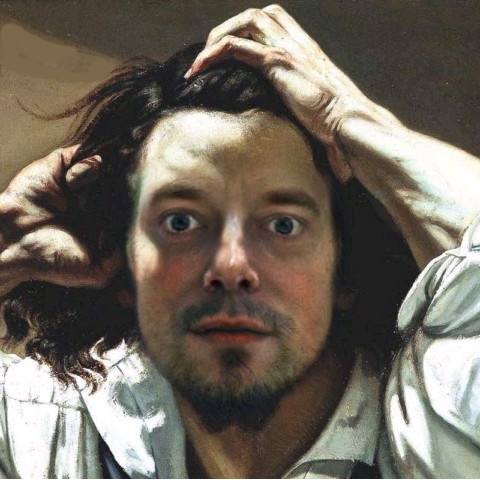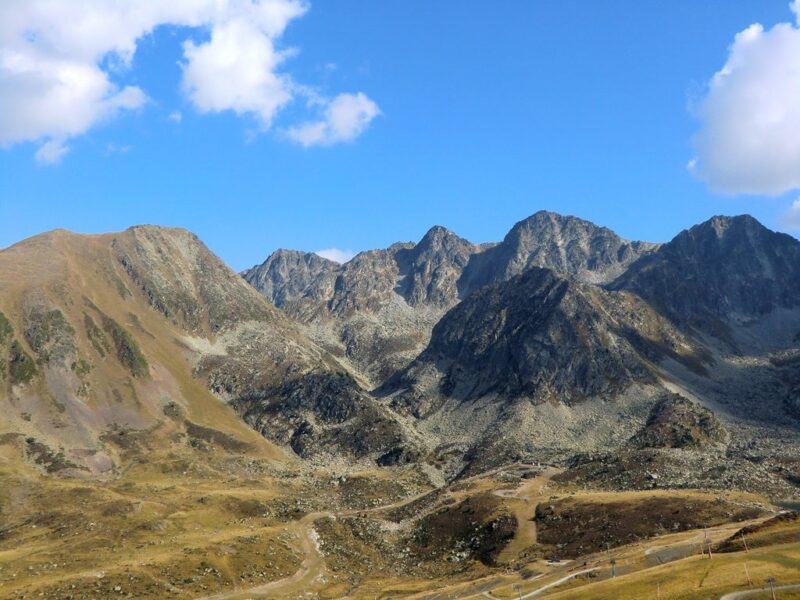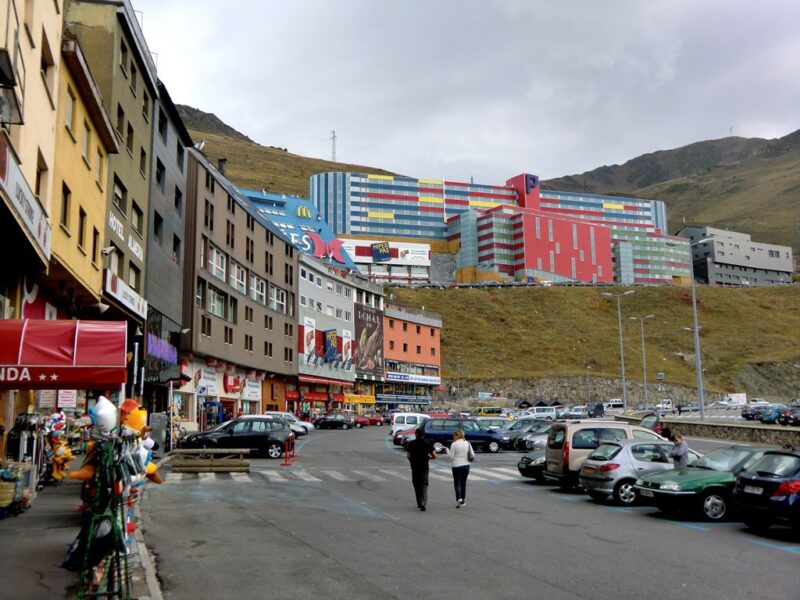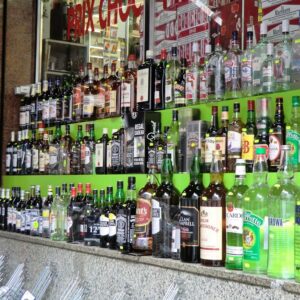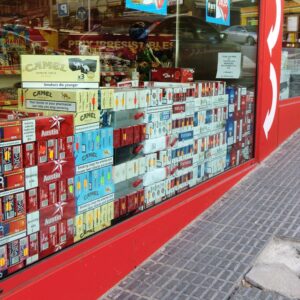Today, we’re ending our series about Andorra (for now?) with El Pas de la Casa, a quite peculiar and unique town.
You can reach it from two directions – and only one road, really. The first one, coming from the “rest of the country” and, more precisely, from Soldeu goes through the Port d’Envalira (Envalira Pass). It has the honor to be the highest pass and highest paved road of the Pyrénées Mountains (2,408 meters high / or 7,900 feet).
The town itself is located between 2,050 and 2,220 meters above sea level. It is considered one of the highest towns in Europe.
There’s a tunnel that allows you to go under the mountain, as the pass is often closed in winter. Andorra used to be cut from France a few times a year during the winter. So, in the 90s as the country was booming, Andorran authorities decided to build a tunnel under the pass. One of the many ways to open up the country. The tunnel was finished and opened in 2002, and since, Andorra and France have been connected year-round.
However, unless the Port d’Envalira is closed, I advise you to go up the mountain rather than through the tunnel. The view is simply amazing from the top.
The second way to get to El Pas de la Casa – also called Le Pas de la Case in French – is from France. Actually, the town can be considered the “French side of Andorra.” It’s the only town in the country where French is the dominant language, even before Catalan, Andorra’s official language. It’s also the only part of Andorra that’s on the Atlantic side of the Pyrénées Mountains’ drainage divide. That is, it’s the only part of Andorra where water drains into France and into the Atlantic Ocean (water in the rest of the country drains into Spain and the Mediterranean Sea).
As you’ll see in the next pictures, El Pas de la Casa has a peculiar appearance, not what you’d expect from a small mountain town, especially compared to the other villages of Andorra. Well, there is a reason for that.
El Pas de la Casa, literally means “the Pass of the House.” What house? The house that used to be the sole building there at the beginning of the 20th Century! A bit more than a hundred years ago, this town simply didn’t exist! It just was one unique shepherd’s house.
Development started after World War Two when French people from the neighboring towns started going to Andorra to find products that weren’t easily available in France. Because of the war, the French economy was in shambles and many products were hard to come by, especially things such as cigarettes and alcohol.
Andorra stayed neutral during the war, and the Nazis never bothered trying to invade it. First, it would have been quite difficult (see the picture above to give you an idea of the geography). Second, there was no point, really. As previously explained, Andorra was quite undeveloped at the time. There was not much to find there.
Stuck between Nazi-occupied France and Francoist Spain, Andorra was in a tricky situation. It had to remain officially neutral, if only for its own survival. However, a lot of the population was anything but neutral. During the war, Andorra became a safe haven for many people fleeing both countries. It also became a hub of spies and informants from all sides of both wars (Francoists, Spanish Republicans, French Resistants, the Gestapo, etc).
Because of this situation, smuggling to and from both France and Spain suddenly became a large source of income in the country. Somehow, it may be how modern Andorra was born. This is definitely when El Pas de la Casa was born. The wartime smuggler pass became a postwar trading post in 1945, and it developed from there. The Andorran economy, revolving around duty-free trade, developed from there too.
A few years later, the second thing that put Andorra and El Pas de la Casa on the map was skiing. The first ski lift opened in 1957 in Coll Blanc (the mountain above El Pas de la Casa, next to Port d’Envalira), and with it, tourism to Andorra was born.
El Pas de la Casa only exists because of these two reasons: trade of goods with France (duty-free cigarettes and alcohol being a big part of it) and ski tourism. That explains the very functional look of the place with little to no concern for appearance, unfortunately.
Alcohol and cigarettes. Yes, these are storefront windows.
Nowadays, manufactured and luxury products are also a big part of the economy. Think electronics, perfumes, jewelry, etc.
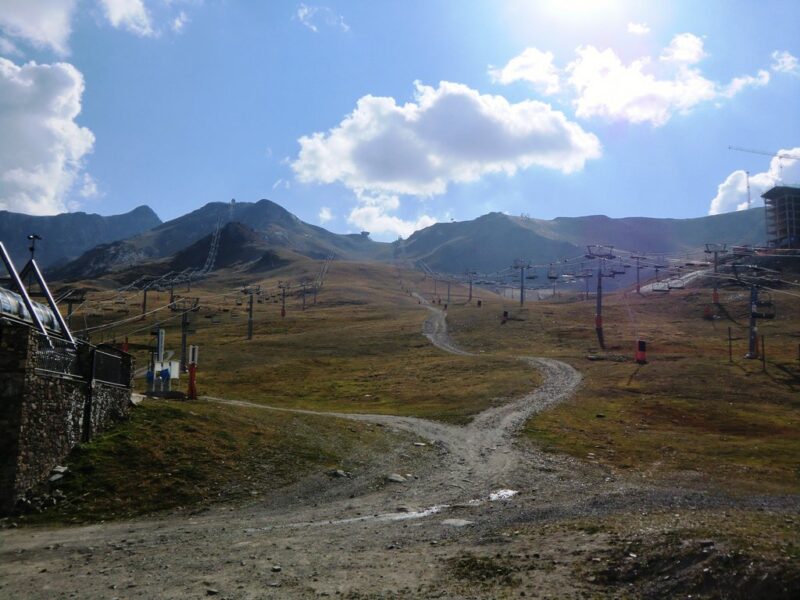
There isn’t much else to say about El Pas de la Casa. It’s not the prettiest place in the world, but it’s an Andorran landmark nonetheless.
And it’s a place that is dear to my heart. I loved going to Andorra as a child (they also have lots of duty-free toys), as a teenager (I also bought my first walkman there), and as a young adult (for the landscape, this time). A few times a year, arriving at Le Pas de la Case always meant the beginning of a fun adventure or a bountiful shopping trip.
Strangely, I don’t think I’ve ever been skiing in Andorra. That’s mostly because I used to spend most of my winter vacations a few kilometers away, right next to slopes that were much closer and didn’t require crossing a border.
And with these lines, I’m ending this series of posts about Andorra at least for now.
I really enjoyed that last trip there. It will be 10 years ago next month, after so many years not going. Hopefully, I’ll go again in the foreseeable future. I would probably have gone this month if it was not for stupid Covid. I’ll definitely try to go during my next trip to France, whenever that is. And when the pandemic is over and it’s sensible to travel again, I warmly advise you to visit the place, to go skiing, shopping, hiking, or – more important – to simply enjoy the wonderful mountain landscapes that Andorra has to offer as well as its unique culture.
Follow me here and there:
If you found this post interesting, why don’t you buy me a coffee?
or become a patron?
Discover more from liminal web
Subscribe to get the latest posts sent to your email.
